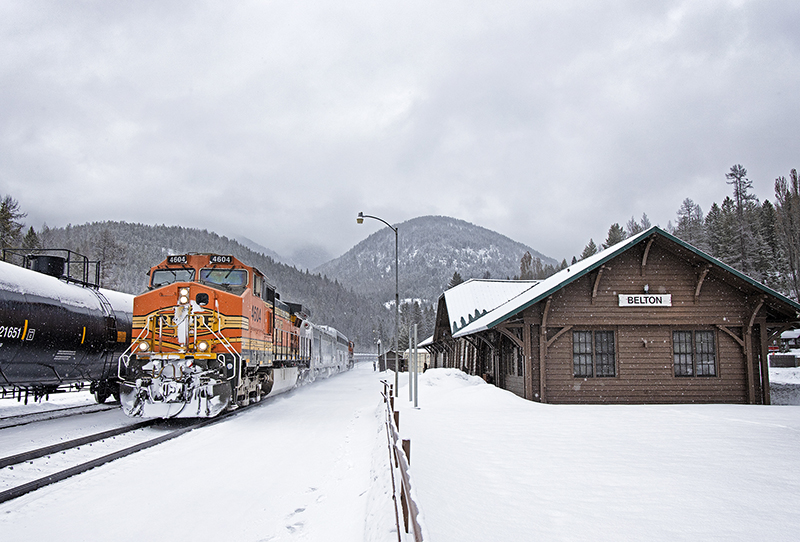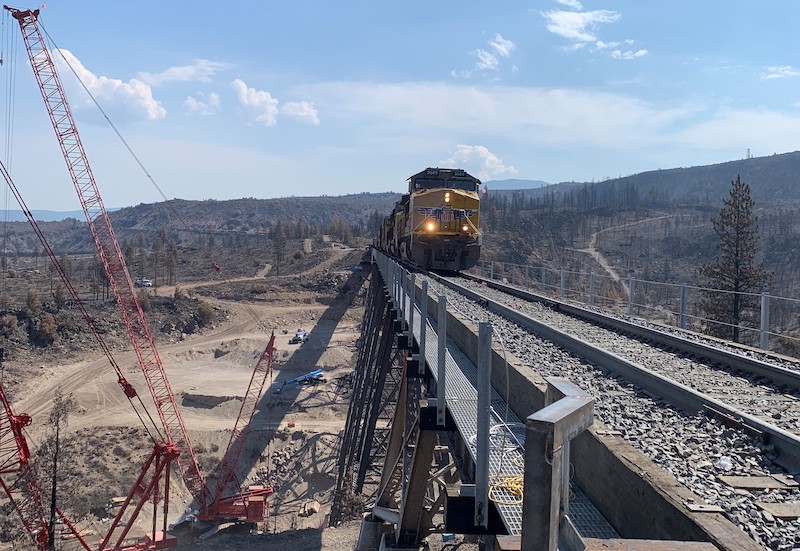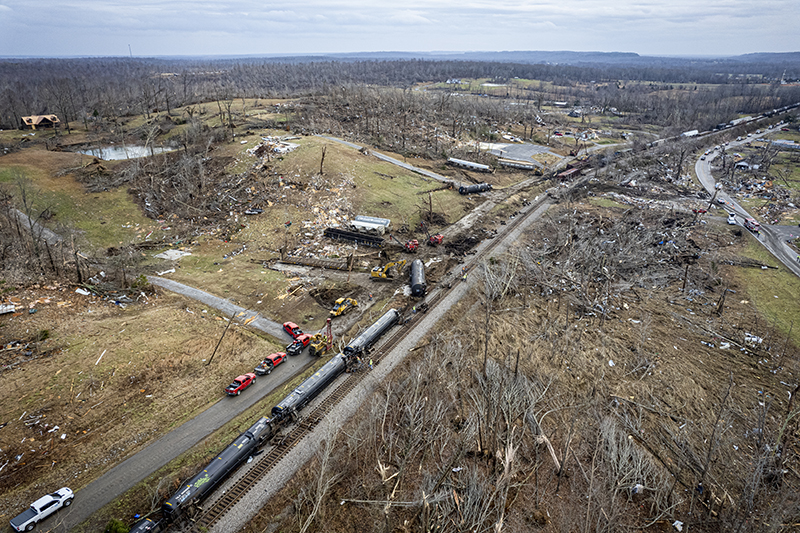This week, the editors of Railfan & Railroad Magazine are looking at some of the biggest stories in railroading in 2021. Be sure to check Railfan.com every weekday all year long for all your (free) railroad news and if you like what you see, consider subscribing.
By Justin Franz
Since the beginning of railroading, Mother Nature has been a force to be reckoned with and in 2021, she made her presence known from coast-to-coast, disrupting operations on Class I, short line and passenger railroads alike.
In the Pacific Northwest, the year got off to an icy start with a series of storms that forced railroads like BNSF Railway and Union Pacific to dispatch “snow coaches” to safely move train crews when the highways were too dangerous to drive on. In 2019, BNSF restored two former Santa Fe Hi-Level coaches and two baggage cars for use on the Northwest and Montana Divisions and both were pushed into service in February. But soon, even the rail lines themselves would be unpassable, specifically Montana’s Marias Pass, where a series of avalanches later in the month blocked the main line for days. A rare, deep freeze across the south that same month also disrupted rail operations in that region for days on end.

BNSF Railway put its “Snow Coaches” into service in the Pacific Northwest in February after storms there made it dangerous to move crews over highways. Here the “Snow Coach” is seen at Belton, Mont. Photo by Justin Franz.
By summer, a new threat emerged in the west: Wildfires. From California to British Columbia, massive wildfires destroyed rail infrastructure and disrupted rail operations for weeks on end. However, those challenges also provided heroic moments, like when Union Pacific rebuilt a fire-damaged bridge a month earlier than expected on its Black Butte Subdivision in Northern California. In Canada, a fire tragically destroyed the small village of Lytton, B.C., and the area’s two railroads — Canadian National and Canadian Pacific — were briefly the subject of an investigation into the blaze’s origins. Federal transportation officials later cleared both companies. While fire season in Montana typically comes to an end by fall, a number of late-season blazes raised eyebrows in December. One of them destroyed part of the town of Denton, home to Central Montana Rail. While the fire destroyed a bridge and some ties, the short line was able to resume operations a few days later.

Union Pacific’s Dry Canyon Bridge in northern California was damaged back in June by the Lava Fire. The railroad expected it to take months to rebuild but trains were moving again by August. Photo Courtesy of Union Pacific.
In September, Hurricane Ida wreaked havoc on rail operations from the Gulf Coast to the Northeast. While damage from the category 4 storm was not surprising along the Gulf Coast, flooding in New York City and the surrounding region was after the storm dumped a historic amount of rain there a few days after landfall.
In November, another storm dumped even more rain in British Columbia, washing out miles of railway along CP and CN, particularly in the Thompson and Fraser River Canyons. While CP was able to reopen its route within a week, CN struggled and a number of trains were detoured through the United States.
In December, a late-season tornado outbreak killed dozens of people across six states and derailed at least one CSX Transportation train in Kentucky. The dramatic scene of freight cars strewn about the right-of-way capped off a notable year in the battle between railroading and Mother Nature.



